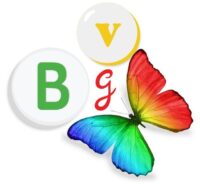In recent years, artificial intelligence (AI) has leapt beyond the realm of automation and into the heart of creativity. One of the most transformative domains it’s reshaping is the world of best animation and 3D design. What was once a labor-intensive, frame-by-frame craft has now entered a new era—where algorithms, deep learning, and neural networks assist, amplify, and even imagine better on behalf of the artist.
🎨 From Frame-by-Frame to Frame-by-Thought
Traditionally, animators and 3D artists spent countless hours refining movements, textures, lighting, and geometry. Every blink, every shadow, every ripple of cloth required manual effort. Today, AI tools can generate in-between frames, simulate physics-based motion, or auto-rig characters in minutes.
Technologies like DeepMotion, Cascadeur, and Adobe Firefly use AI to automate natural movements, improve keyframe transitions, and make real-time adjustments based on minimal user input. The result? Artists spend more time focusing on storytelling and style, while the AI handles repetitive or technical details.
🧠 Machine Learning Meets Visual Storytelling
At the core of this transformation lies machine learning. Algorithms trained on vast datasets of human motion, facial expressions, and environmental physics can now predict realistic animations based on minimal cues.
In 3D environments, AI tools like Runway ML, Luma AI, and Kaedim allow creators to generate detailed models from 2D sketches or photos, often in seconds. These platforms use generative models—some built on architectures like GANs (Generative Adversarial Networks)—to create lifelike characters, assets, and environments without starting from scratch.
🚀 Real-Time Rendering and Virtual Production
AI is a major driver behind real-time rendering engines like Unreal Engine and Unity becoming more accessible and powerful. AI-enhanced lighting, texture mapping, and upscaling allow scenes to be visualized and rendered at cinematic quality as you create—cutting production time dramatically.
Virtual production, seen in shows like The Mandalorian, now uses AI to manage camera tracking, environmental mapping, and actor-background integration in real-time. The combination of AI and 3D has enabled dynamic, immersive storytelling on a fraction of Hollywood’s traditional budget.
🔮 The Future: Co-Creation, Not Replacement
Despite fears of AI replacing artists, the future seems rooted in co-creation. AI isn’t here to take over—it’s here to collaborate. Think of it as the ultimate assistant: fast, tireless, and endlessly adaptive. The human spark—emotion, story, purpose—still sits at the center of every meaningful animation.
As tools evolve and creators adapt, one thing is certain: AI is not the end of artistry. It’s the beginning of a new creative renaissance.
